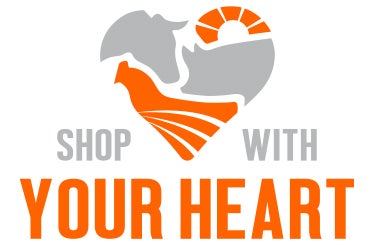
Farm: Pitman Farms
Location: Sanger, California
Operation profile:
- Processes 500,000+ chickens per week
- ≈20,000 birds on site
- Produces and processes non-certified turkeys & ducks
Certification: G.A.P. Steps 3, 4 & 5
Background
Mary’s Free Range Chicken (“Mary’s”) is produced by Pitman Farms, a family-owned business in Sanger, California, that has been raising poultry for three generations. One generation ago, Pitman Farms was a traditional poultry operation. According to David Pitman, the family turned to higher welfare practices based on an interest in the links between animal welfare and food safety, increasing discomfort with the welfare of conventionally raised animals and rising consumer demand for higher welfare alternatives.
About 90% of the 500,000 chickens processed each week under the brand are Global Animal Partnership (G.A.P.) Step-3 certified. The remaining 10% are certified at Step levels 4 and 5. Chickens are sourced from Pitman Farms and other California-based G.A.P.-certified farms, as well.
Getting Certified
Mary’s received G.A.P. certification in 2008. According to David, Mary’s pursued certification because customers had started asking, “What certification are you using?”, and David suspected that “the days were numbered” of companies confirming operational information to customers “by affidavit on company letterhead.” The trend was arcing toward the need to “verify.”
Mary’s had already been selling its products to Whole Foods Market® (WFM) prior to G.A.P.’s launch, and was required to obtain G.A.P. certification in order to continue doing so. David said that G.A.P.’s flat fee approach to audits made program participation palatable.
According to David, in order to become G.A.P.-certified, Mary’s had to make some changes to its operation. For example, it had to add hay bales and eucalyptus branches as enrichments to their chicken houses. Mary’s also had to create more infrastructure to supply shade and water outside. Finally, to comply with G.A.P.’s record-keeping requirements, Mary’s had to start administering more detailed and varied paperwork.
David explains that Mary’s also had to “gently” bring suppliers on board with G.A.P. by (1) discussing the pros and cons of participation; (2) paying for retrofits and improvements needed to meet G.A.P. standards (like adding enrichments and doors for outdoor access); (3) paying for initial and annual certification costs (Mary’s pays approximately $1,750 per audit, per farm); and (4) offering them a premium. According to David, Mary’s helps supplier farms prepare for audits on a continuing basis. Specifically, Mary’s Farm supervisors visit the farms to help ensure proper audit preparation, and conduct “pre-audits” to “give them a taste of it” before the official audit.
G.A.P. Certification Outcomes
Increased Sales. Mary’s started producing pasture-raised chicken in 2005 and had trouble selling the product. In 2008, they sought and received Step 5 certification, and sales doubled. It did so, David thinks, “because there was a simple scorecard system. Looking at a quick [Step] 5 or a quick [Step] 3, [consumers] can quickly understand the difference.”
Product Differentiation. Mary’s leverages its G.A.P. certification in marketing. It uses the G.A.P. logo on its products. Additionally, its website contains an “Animal Welfare” section dedicated to describing “What Makes Our Chicken Different?” The website includes a chart of select G.A.P. standards for Step Levels 3 through 5.
Premiums. David reports that Mary’s Chicken pays a 10% premium to its G.A.P.-certified supplier farms. This is, in part, to cover the increased effort and costs of record-keeping, enrichments, and “free-range” conditions.
Trickle-Down Animal Welfare. Mary’s Chicken has expanded its operations and sources from multiple farms which must be G.A.P.-certified.
Why Certify with G.A.P.?
David recalls feeling slightly overwhelmed the first time he read through all of G.A.P.’s welfare standards. However, David points to the following as what he believes to be benefits of pursuing G.A.P. certification:
- Consumers are demanding more humane treatment of farm animals and “being third-party verified brings confidence to the consumer.”
- It is required by Whole Foods Market®.
- The audit has a flat fee per farm (Mary’s certifier is EarthClaims LLC).
- “What I like about G.A.P. is the fact that it’s a scorecard.” In David’s experience, the step levels help consumers differentiate among products and even between G.A.P.-certified products.
- David suggests G.A.P. may be increasingly relevant outside the WFM context. Two other retailers have purchased chicken from Mary’s on the basis of it being G.A.P.-certified.
- Finally, David speculates that even smaller farms targeting local markets (like those in California processing 500 pasture-raised chickens per week) might benefit from G.A.P. certification to differentiate their products and explain their higher prices to consumers.”

 Take the Shop With Your Heart survey and get materials that will help you make great shopping decisions.
Take the Shop With Your Heart survey and get materials that will help you make great shopping decisions.